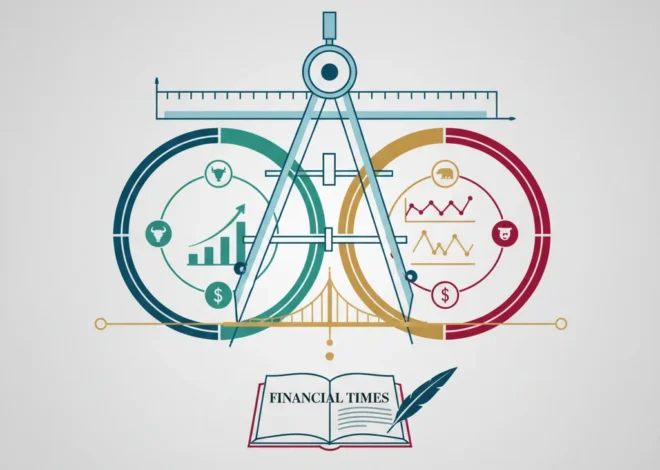
Beyond the Punchline: What Tim Robinson’s ‘The Chair Company’ Teaches the World of Finance
In the sterile, often predictable world of corporate life, we’ve all witnessed moments that skirt the edge of absurdity. A mis-sent email that causes quiet panic, a PowerPoint presentation that goes spectacularly off the rails, a minor disagreement over office furniture that escalates with unnerving intensity. Usually, these moments are contained, becoming anecdotes shared over coffee. But what if one wasn’t? What if a single, mundane office mishap was enough to send a professional into a complete, unhinged spiral?
This is the brilliantly uncomfortable premise of Tim Robinson’s new HBO series, The Chair Company. Described by the Financial Times as a “bracingly unhinged” and “furiously weird” series, the show follows a middle-aged man whose professional and personal life implodes following a seemingly minor workplace incident. While presented as surrealist comedy, the series offers a surprisingly potent, if satirical, lens through which leaders, investors, and finance professionals can examine the often-ignored human element that underpins the entire global economy. It’s a masterclass in the psychology of irrationality, the fragility of corporate culture, and the catastrophic potential of a single, unmanaged risk.
The Catalyst Event: A Microcosm of Market Shocks
The narrative engine of The Chair Company is a simple “office mishap.” While the show exaggerates the fallout for comedic effect, the principle is deeply familiar to anyone in the world of finance and investing. A small, unforeseen event—a “black swan” in market parlance—can trigger a cascade of devastating consequences. Think of the 2010 “Flash Crash,” where an automated algorithm’s large sell order triggered a trillion-dollar market plunge in minutes. Or consider how a single default on a niche mortgage-backed security can, and did, unravel the entire global banking system in 2008.
The show’s protagonist doesn’t just make a mistake; he becomes consumed by it. His reaction is not one of logical problem-solving but of escalating panic, denial, and doubling down on poor decisions. This mirrors how a trader, caught in a losing position, might ignore stop-loss orders and pour more capital into a failing asset, driven by ego and the desperate hope of breaking even. The initial error isn’t the fatal blow; the irrational human response to it is. For business leaders, this serves as a critical reminder that operational risks are often people risks. A flaw in a process is one thing; a culture where employees are too afraid to report a mistake—or too proud to admit one—is a systemic vulnerability waiting to be exploited.
Behavioral Economics and the Unhinged Investor
At its core, The Chair Company is a living, breathing case study in behavioral economics. It strips away the veneer of the homo economicus—the theoretical rational actor who always makes logical, self-interested decisions—and reveals the messy, emotional, and deeply irrational being that actually controls the capital. The protagonist’s journey is a highlight reel of the cognitive biases that plague investors and can derail even the most sophisticated trading strategies.
These biases aren’t just comedic fodder; they have tangible, multi-billion dollar consequences in the stock market. Understanding them is fundamental to modern portfolio management and risk assessment. Below is a comparison of the character’s likely behaviors with established cognitive biases in investing:
| Cognitive Bias | Description in Finance & Investing | How It’s Satirized in The Chair Company |
|---|---|---|
| Sunk Cost Fallacy | Continuing a failing endeavor because of the resources already invested, rather than cutting losses. | The protagonist’s refusal to let go of the initial mishap, investing more emotional and professional capital into justifying his spiralling actions. |
| Confirmation Bias | Seeking out and interpreting information that confirms one’s pre-existing beliefs, while ignoring contradictory evidence. | The character likely surrounds himself with skewed perspectives, reinterpreting every neutral event as a part of the conspiracy against him. |
| Escalation of Commitment | The tendency to double down on a bad decision, even in the face of negative feedback, to justify the initial choice. | The core comedic and tragic arc of the series, where each attempt to fix the problem only makes it exponentially worse. |
| Availability Heuristic | Overestimating the likelihood of events that are more easily recalled in memory, often because they are recent or dramatic. | The initial office incident becomes the all-consuming, defining event of the character’s reality, crowding out all rational thought. |
This satirical depiction highlights a crucial truth: markets are not just driven by data, algorithms, or the elegant theories of economics. They are driven by fear, greed, pride, and panic. The show’s absurdity forces us to confront the absurdity that can sometimes grip Wall Street.
Workplace Culture as a Systemic Risk Factor
The series is set within the confines of an office, and its comedy is derived from the social contracts we all navigate at work. It implicitly asks: what kind of corporate environment allows such a spiral to occur? A healthy organization provides psychological safety, a concept extensively researched by academics like Amy Edmondson of Harvard Business School. In such an environment, employees feel safe to take interpersonal risks—like admitting a mistake, asking a question, or challenging the status quo—without fear of retribution or humiliation. A 2019 study found that dysfunctional workplaces can cost the U.S. economy hundreds of billions in lost productivity (source).
The Chair Company presents the antithesis of this. The protagonist’s extreme reaction suggests a culture of high stakes and low trust. In such an environment:
- Mistakes are seen as character flaws: A single error can become a career-defining event, leading individuals to hide problems rather than solve them.
- Communication breaks down: Authentic dialogue is replaced by corporate jargon, passive aggression, and CYA (Cover Your Assets) emails, making de-escalation impossible.
- Pressure outweighs support: The focus on performance metrics and appearances crushes the human capacity for empathy and collaborative problem-solving.
For any organization, but especially those in high-stakes fields like banking and asset management, culture is not a “soft” HR topic; it is a hard-edged component of risk management. A toxic culture can lead to everything from covering up trading losses to unethical sales practices, as seen in numerous real-world corporate scandals. As one expert on organizational health put it, “Culture eats strategy for breakfast.” (source). The show, in its own strange way, proves that a dysfunctional culture can also eat a person’s sanity for lunch.
Leadership Lessons from the Abyss of Comedy
While we laugh at the protagonist’s plight, leaders should be taking notes. The series is a powerful “what not to do” guide for managing people and crises. The central failure is one of de-escalation. A strong leader could have intervened early, framed the mishap as a learning opportunity, and provided a clear path to resolution. Instead, the vacuum of effective leadership allows the problem to fester and metastasize.
The key leadership takeaways are clear:
- Normalize Error: Leaders must actively model that mistakes are an inevitable part of innovation and operations. A culture that punishes error stifles growth and encourages concealment. According to the original review, the show is a “showcase for Robinson’s singular comic persona,” which thrives on social awkwardness—a direct result of the fear of making a mistake.
- Lead with Empathy: Understanding the human stress response is critical. When an employee is panicking, responding with logic alone is often ineffective. Acknowledging their stress and offering support is the first step toward a rational solution.
- Build Resilient Systems, Not Rigid Rules: A workplace governed by fear and rigid bureaucracy is brittle. When an unexpected event occurs, it shatters. A resilient organization has flexible protocols and empowers its people to adapt and solve problems collaboratively.
In finance, we spend immense resources modeling market risk, credit risk, and operational risk. The Chair Company reminds us to model human risk—the risk of pride, fear, and panic—and to invest in the one asset that can mitigate it: a strong, supportive, and psychologically safe culture.
Conclusion: The Economic Value of Not Losing Your Mind
It may seem a stretch to draw lessons on the global economy and investing strategy from a surrealist HBO comedy. Yet, Tim Robinson’s work holds up a distorted mirror to our professional lives, forcing us to see the anxieties and absurdities we’ve normalized. The Chair Company is a potent reminder that beneath the complex layers of financial technology, market analysis, and economic theory, the global marketplace is, and always will be, a fundamentally human enterprise.
For leaders, it’s a call to build cultures that are resilient to human error. For investors, it’s a warning against the cognitive biases that can lead to financial ruin. And for all of us navigating the pressures of the modern workplace, it’s a darkly comedic affirmation that perhaps we’re all just one bad day—or one office chair mishap—away from going completely off the rails. Understanding that vulnerability is the first step toward building more robust companies, more rational portfolios, and a more stable economy.


